
Powerful Pitch, Multiple Intros Available, 100% Backed By Science. Top Affs Are Scoring Up To $4 EPC. Limited Slots Only. Contact Us To Get Whitelisted.
This collagen looks & tastes like caramel with ZERO sugar. Earn at LEAST $75 per sale on average (EPCs as high as $3.25)! MUST BE WHITELISTED TO PROMOTE.
Looking to build an effective skincare routine backed by expert evidence? Our website has got you covered. Discover the latest tips, tricks, and science-based advice on creating a personalized routine that works for your skin type. Say goodbye to confusion and hello to radiant, healthy skin with our comprehensive guide. Start your journey towards a flawless complexion today!
Taking care of your skin is an essential part of your overall health and wellbeing. Your skin is your body's largest organ, and it serves many important functions, including protecting you from the environment, regulating your body temperature, and producing vitamin D. To keep your skin healthy and looking its best, it's crucial to establish a consistent skincare routine that's tailored to your specific needs.
how to build a skincare routine: What the Experts Say You Should Know
Importance of a skincare routine & building a skincare routine

Importance Of A Skincare Routine
In this article, we'll provide you with expert evidence and tips on how to build an effective skincare routine. We'll cover the key steps involved in creating a routine that works for your skin type and address some common myths and misconceptions along the way.
Why is a skincare routine important?
A consistent skincare routine can provide numerous benefits, including improved skin health, enhanced appearance, and increased self-confidence. By taking the time to care for your skin regularly, you can prevent a variety of issues, such as dryness, wrinkles, acne, and sun damage. Moreover, a well-established skincare routine can help you identify changes in your skin's condition and address them promptly.
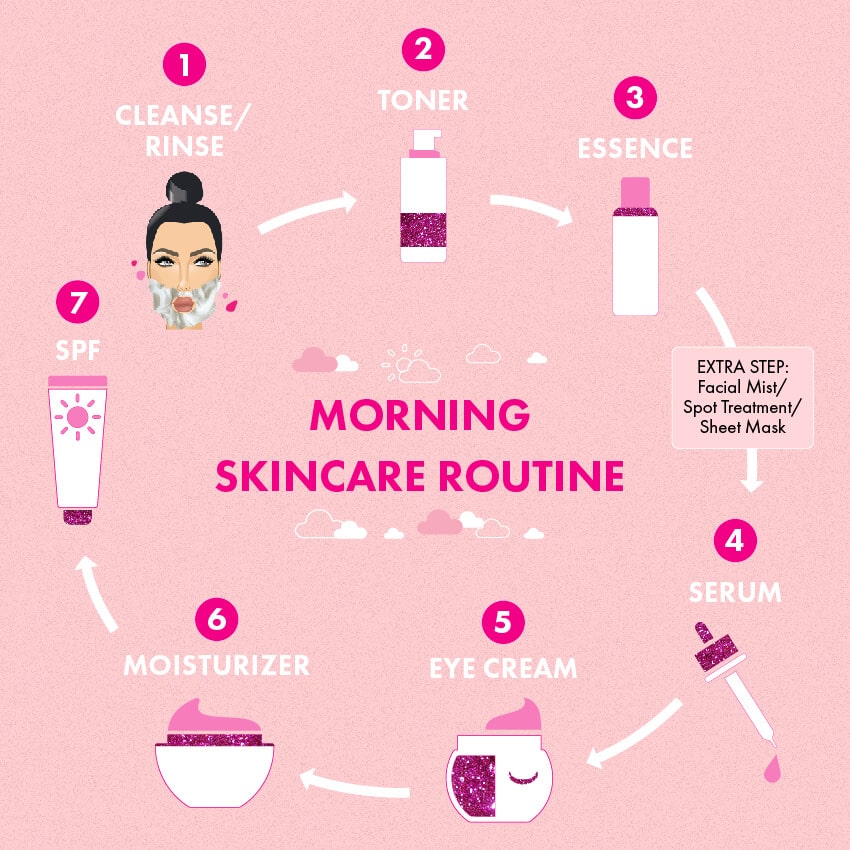
how-to-build-a-skincare-routine
Overview of the key steps in building a skincare routine
Building a skincare routine that suits your skin's needs doesn't have to be complicated. By following these basic steps, you can create a simple yet effective routine that works for you:
Step 1: Determine your skin type - Understanding your skin type is essential in selecting the right products for your skin. You can determine your skin type by examining its characteristics, such as oiliness, dryness, and sensitivity.
Step 2: Cleanse - Cleansing is a crucial step in any skincare routine, as it removes dirt, oil, and makeup from your skin. It's essential to choose a gentle cleanser that won't strip your skin of its natural oils.
Step 3: Exfoliate - Exfoliating helps to remove dead skin cells and improve your skin's texture. However, it's important to exfoliate gently and avoid over-exfoliating, as this can damage your skin.
Step 4: Treat - This step involves using targeted treatments for specific skin concerns, such as acne, wrinkles, or hyperpigmentation. It's essential to choose products that are suitable for your skin type and use them as directed.
Step 5: Moisturize - Moisturizing helps to keep your skin hydrated and prevent dryness. Choose a moisturizer that's appropriate for your skin type and apply it daily.
Step 6: Protect - Protecting your skin from the sun's harmful UV rays is crucial in maintaining healthy skin. Apply a broad-spectrum sunscreen with an SPF of at least 30 daily, even on cloudy days.

building-a-skincare-routine
Conclusion: By following these key steps, you can build a skincare routine that's effective, easy to follow, and tailored to your skin's needs. Remember, skincare is not one-size-fits-all, and what works for one person may not work for another. Experiment with different products and techniques to find what works best for you, and don't be afraid to seek expert advice if you need it. With a little effort and the right tools, you can achieve healthy, glowing skin that makes you feel confident and beautiful.
Read more: Skincare 101: The Basics of a Healthy Skincare Routine
II. Identify your skin type
Identifying Your Skin Type

Understanding Skin Types
Understanding your skin type is the first and most crucial step in building a skincare routine. Your skin type will dictate which products and ingredients work best for you and which ones to avoid. There are several different skin types, including oily, dry, combination, and sensitive skin.
Oily skin: People with oily skin typically have larger pores, produce more sebum, and are more prone to breakouts. Oily skin may appear shiny, especially in the T-zone area (forehead, nose, and chin).
Dry skin: Dry skin tends to be flaky, rough, and may feel tight or itchy. People with dry skin may experience redness, fine lines, and wrinkles.
Combination skin: Combination skin is a combination of oily and dry skin. People with combination skin may experience oily skin in the T-zone area and dryness on their cheeks.
Sensitive skin: Sensitive skin is easily irritated and may react to certain ingredients or environmental factors. People with sensitive skin may experience redness, itching, or burning sensations.
How to Identify Your Skin Type
To identify your skin type, start by washing your face with a gentle cleanser and pat it dry with a towel. Wait for an hour or two and observe your skin's appearance and texture.
Oily skin: If your skin appears shiny and feels oily to the touch, you likely have oily skin.
Dry skin: If your skin feels tight or itchy, and you notice flakiness or dry patches, you likely have dry skin.
Combination skin: If you notice oiliness in the T-zone area and dryness on your cheeks, you likely have combination skin.
Sensitive skin: If your skin is easily irritated or reacts to certain ingredients or products, you likely have sensitive skin.
Importance of Choosing Products Suitable for Your Skin Type
Choosing products that are suitable for your skin type is crucial in achieving a healthy and glowing complexion. Using the wrong products can lead to skin irritation, breakouts, and other issues.
For oily skin, it's best to use lightweight, oil-free products that won't clog pores or contribute to excess oil production. Look for ingredients like salicylic acid or benzoyl peroxide, which can help control oil and prevent breakouts.
For dry skin, use products that are rich in hydrating ingredients like hyaluronic acid, glycerin, and ceramides. These ingredients can help replenish moisture and prevent further dryness.
For combination skin, use a combination of products that cater to both oily and dry skin types. Look for products that are lightweight and hydrating but also help control excess oil production in the T-zone area.
For sensitive skin, use products that are gentle, fragrance-free, and formulated for sensitive skin types. Avoid products that contain alcohol, sulfates, or other harsh ingredients that can irritate the skin.
Conclusion: Identifying your skin type is the first step in building a skincare routine that works for you. Once you know your skin type, you can select products and ingredients that cater to your skin's specific needs. Remember, everyone's skin is unique, so it may take some trial and error to find the right products for you. Be patient, take your time, and seek expert advice if you need it. With a little effort and the right tools, you can achieve healthy, radiant skin that makes you feel confident and beautiful.
III. Cleanse
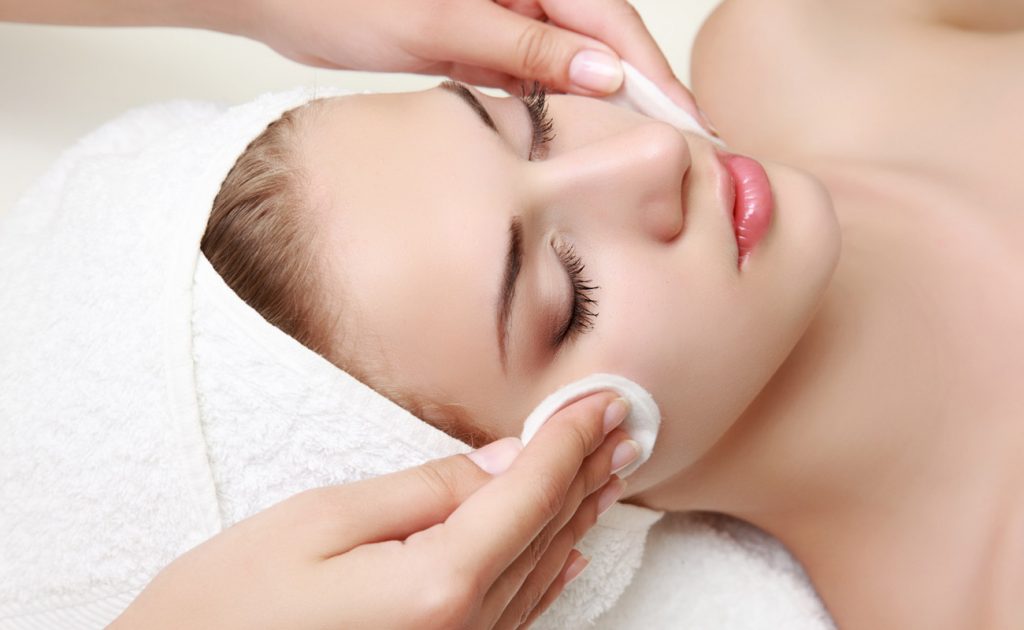
Cleanse
Cleansing is a fundamental step in building a proper skincare routine, and it plays a crucial role in achieving healthy, radiant skin. It helps to remove dirt, impurities, excess oil, and makeup residue from the skin's surface. Without proper cleansing, your skin may become more prone to breakouts, clogged pores, and other skin issues. In this article, we will explore the importance of cleansing, different types of cleansers, how to choose the right cleanser for your skin type, and proper cleansing techniques using Nu Skin cleanser.
Importance of Cleansing
Cleansing is vital to maintain healthy skin. It is the first step in any skincare routine, and it helps to remove impurities and dirt from the skin's surface. It also helps to prepare the skin for the next steps in your routine, including toning, treating, and moisturizing. By cleansing your skin, you will allow your skin to breathe, promote cellular turnover, and prevent breakouts.
Different Types of Cleansers
There are several types of cleansers available on the market, including foaming cleansers, cream cleansers, gel cleansers, and oil-based cleansers.
Foaming Cleansers: Foaming cleansers are ideal for oily or acne-prone skin types. They contain ingredients such as salicylic acid or benzoyl peroxide that help to control oil production and prevent breakouts.
Cream Cleansers: Cream cleansers are ideal for dry or sensitive skin types. They contain hydrating ingredients such as glycerin or ceramides that help to replenish moisture and prevent further dryness.
Gel Cleansers: Gel cleansers are best for oily skin types. They help to remove excess oil and impurities from the skin's surface without stripping the skin of its natural oils.
Oil-Based Cleansers: Oil-based cleansers are ideal for all skin types, especially those with dry or sensitive skin. They help to dissolve makeup, dirt, and oil without stripping the skin of its natural oils.
How to Choose the Right Cleanser for Your Skin Type
Choosing the right cleanser for your skin type is essential in achieving healthy, radiant skin. Nu Skin offers a range of cleansers that are specifically formulated for different skin types and concerns. To choose the right cleanser, consider your skin type and its specific needs. For example, if you have oily skin, look for a foaming or gel-based cleanser with ingredients that control oil production. If you have dry skin, look for a cream or oil-based cleanser with hydrating ingredients.
Proper Cleansing Techniques Using Nu Skin Cleanser
Proper cleansing techniques are crucial in achieving a deep, thorough cleanse without damaging the skin. Here's how to properly cleanse your skin using Nu Skin cleanser:
- Wet your face with warm water to help open up your pores.
- Apply a small amount of Nu Skin cleanser to your fingertips and gently massage it into your skin using circular motions.
- Rinse your face with warm water and pat it dry with a clean towel.
- Follow up with the rest of your skincare routine, including toner, serum, moisturizer, and sunscreen.
Conclusion: Cleansing is an essential step in any skincare routine. By choosing the right cleanser for your skin type and following proper cleansing techniques, you can achieve healthy, radiant skin. Nu Skin offers a range of cleansers that are specifically formulated for different skin types and concerns, making it easy to find the perfect cleanser for you. Remember to be gentle, take your time, and seek expert advice if you need it. With the right tools and techniques, you can achieve the glowing, beautiful skin you've always wanted.
IV. Exfoliate
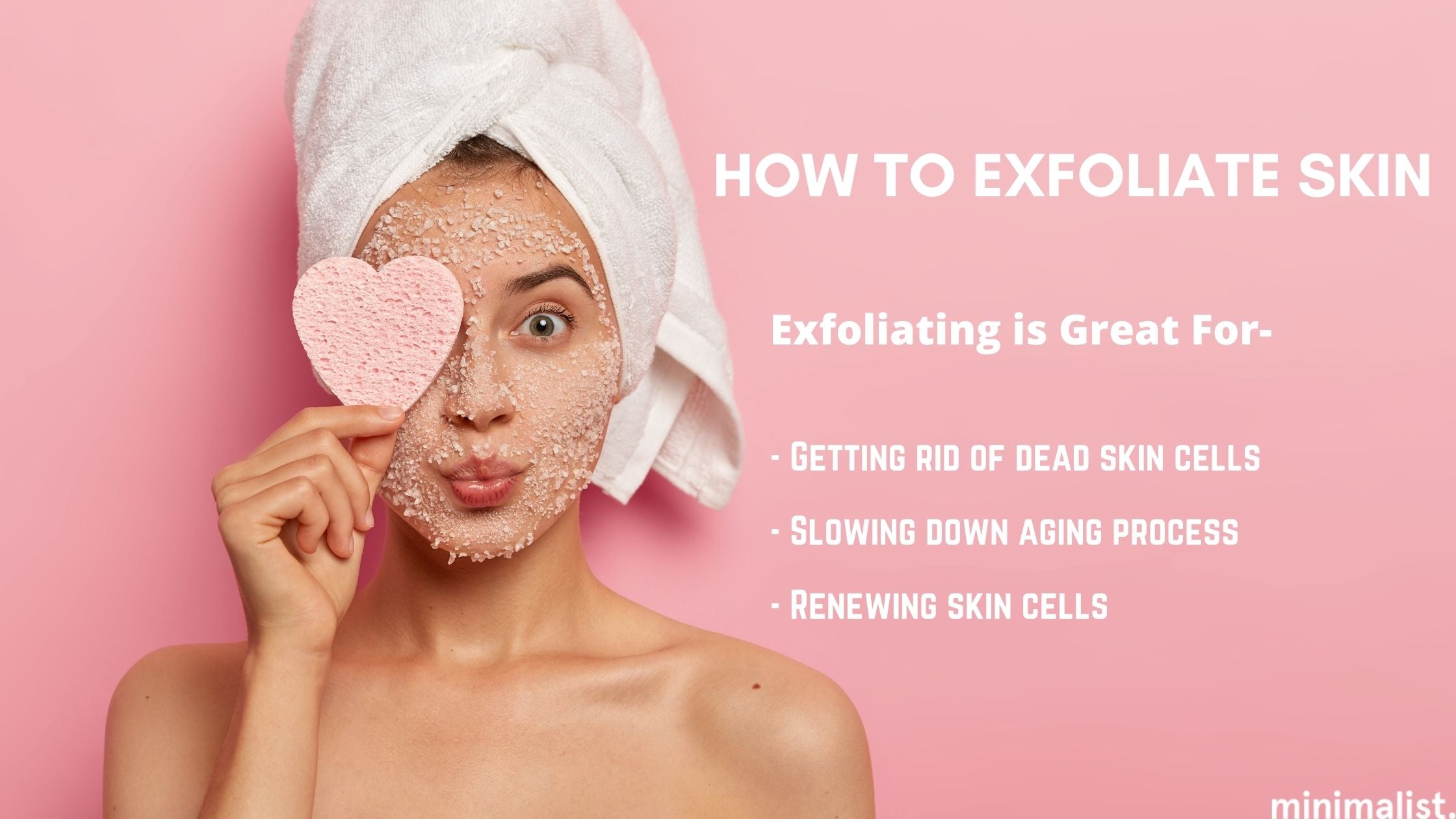
Exfoliate
Exfoliation is an essential step in building a proper skincare routine. It helps to remove dead skin cells and unclog pores, resulting in smoother, brighter, and more even-looking skin. In this article, we will explore the benefits of exfoliation, different types of exfoliants, how to choose the right exfoliant for your skin type, and proper exfoliation techniques.
Benefits of Exfoliation
Exfoliation has numerous benefits for the skin. It helps to remove dead skin cells, which can clog pores and lead to breakouts. It also stimulates cell turnover, which can improve the skin's texture and tone. Exfoliation can also help to reduce the appearance of fine lines and wrinkles, and it can improve the absorption of other skincare products.
Different Types of Exfoliants
There are two main types of exfoliants: physical and chemical.
Physical Exfoliants: Physical exfoliants are products that contain small particles or granules that physically scrub away dead skin cells. Examples include scrubs, brushes, and microdermabrasion.
Chemical Exfoliants: Chemical exfoliants are products that contain alpha-hydroxy acids (AHAs) or beta-hydroxy acids (BHAs) that dissolve dead skin cells. Examples include glycolic acid, lactic acid, and salicylic acid.
How to Choose the Right Exfoliant for Your Skin Type
Choosing the right exfoliant for your skin type is essential to avoid irritation or damage. If you have sensitive skin, it is best to choose a chemical exfoliant, as physical exfoliants can be too abrasive. If you have oily or acne-prone skin, a salicylic acid exfoliant can help to unclog pores and reduce breakouts. For dry or mature skin, a glycolic acid exfoliant can help to brighten and soften the skin.
Proper Exfoliation Techniques
Proper exfoliation techniques are crucial in achieving a thorough exfoliation without damaging the skin. Here's how to properly exfoliate your skin:
- Choose the right exfoliant for your skin type.
- Apply a small amount of the exfoliant to your fingertips and gently massage it into your skin using circular motions. Be gentle and avoid applying too much pressure.
- Rinse your face with warm water and pat it dry with a clean towel.
- Follow up with the rest of your skincare routine, including toner, serum, moisturizer, and sunscreen.
Conclusion: Exfoliation is an important step in any skincare routine. By choosing the right exfoliant for your skin type and following proper exfoliation techniques, you can achieve smoother, brighter, and more even-looking skin. Remember to be gentle and avoid over-exfoliating, which can cause irritation and damage. With the right tools and techniques, you can achieve the healthy, radiant skin you've always wanted.
V. Treatments

Treatments
In addition to cleansing and exfoliating, incorporating treatments into your skincare routine can help to target specific skin concerns and improve overall skin health. In this section, we will explore the purpose of treatments, different types of treatments, and how to choose the right treatment for your skin type.
Purpose of Treatments
The purpose of treatments is to provide your skin with additional nutrients, hydration, and active ingredients to help address specific skin concerns such as acne, aging, or hyperpigmentation. They can also help to boost the effectiveness of your other skincare products.
Different Types of Treatments
There are many different types of treatments available, including serums, toners, masks, and spot treatments.
Serums: Serums are lightweight, highly concentrated products that contain active ingredients such as antioxidants, peptides, or hyaluronic acid. They are designed to penetrate deeper into the skin to provide targeted treatment.
Toners: Toners are liquid products that are used after cleansing to help restore the skin's pH balance and prepare it for the next steps in your skincare routine. They can also contain active ingredients to provide additional benefits.
Masks: Masks are treatments that are applied to the skin and left on for a certain period of time before being rinsed off. They can come in different forms such as sheet masks, clay masks, or overnight masks and can provide a variety of benefits such as hydration, brightening, or exfoliation.
Spot Treatments: Spot treatments are products that are designed to target specific areas of concern such as acne, dark spots, or fine lines. They usually contain active ingredients such as salicylic acid or retinol to help address these concerns.
How to Choose the Right Treatment for Your Skin Type
When choosing a treatment for your skin type, it's important to consider your specific skin concerns and choose a product that is formulated to address those concerns. For example, if you have dry skin, you may want to look for a serum or mask that contains hydrating ingredients like hyaluronic acid. If you have acne-prone skin, a spot treatment containing salicylic acid may be beneficial. It's also important to choose products that are suitable for your skin type and don't cause irritation or breakouts.
Conclusion: Incorporating treatments into your skincare routine can help to target specific skin concerns and improve overall skin health. By understanding the different types of treatments available and choosing products that are suitable for your skin type and concerns, you can achieve the best possible results. Remember to always patch test new products and introduce them gradually into your routine to avoid any adverse reactions.
VI. Moisturize

Moisturize
Moisturizing is an essential step in any skincare routine. It helps to keep the skin hydrated and supple, preventing dryness and flakiness. In this section, we will explore the importance of moisturizing, different types of moisturizers, how to choose the right moisturizer for your skin type, and proper moisturizing techniques.
Importance of Moisturizing
Moisturizing is important for all skin types, even oily or acne-prone skin. It helps to replenish the skin's natural moisture barrier, which can be compromised by factors such as harsh skincare products, weather conditions, and aging. A well-moisturized skin also has a healthier appearance and can help to reduce the appearance of fine lines and wrinkles.
Different Types of Moisturizers
There are different types of moisturizers available, including creams, lotions, and gels. Creams are thicker and more hydrating, making them suitable for dry or mature skin. Lotions are lighter and more suitable for normal or combination skin. Gels are lightweight and suitable for oily or acne-prone skin.
How to Choose the Right Moisturizer for Your Skin Type
When choosing a moisturizer, it's important to consider your skin type and concerns. If you have dry or mature skin, look for a moisturizer that contains ingredients such as hyaluronic acid, glycerin, or ceramides, which can help to hydrate and plump the skin. If you have oily or acne-prone skin, look for a moisturizer that is oil-free and non-comedogenic, which means it won't clog pores. If you have sensitive skin, look for a fragrance-free and hypoallergenic moisturizer.
Proper Moisturizing Techniques
To properly moisturize your skin, start by applying a small amount of moisturizer to your fingertips and gently massage it into your skin, focusing on areas that tend to be drier such as the cheeks, forehead, and chin. Allow the moisturizer to absorb fully before applying any makeup or sunscreen. For best results, moisturize twice a day, once in the morning and once at night, after cleansing and any treatments.
Conclusion: Moisturizing is an important step in any skincare routine, helping to keep the skin hydrated, supple, and healthy. By choosing the right moisturizer for your skin type and concerns and incorporating proper moisturizing techniques into your routine, you can achieve the best possible results. Don't forget to drink plenty of water and protect your skin from the sun to maintain a healthy and radiant complexion.
VII. Sun protection
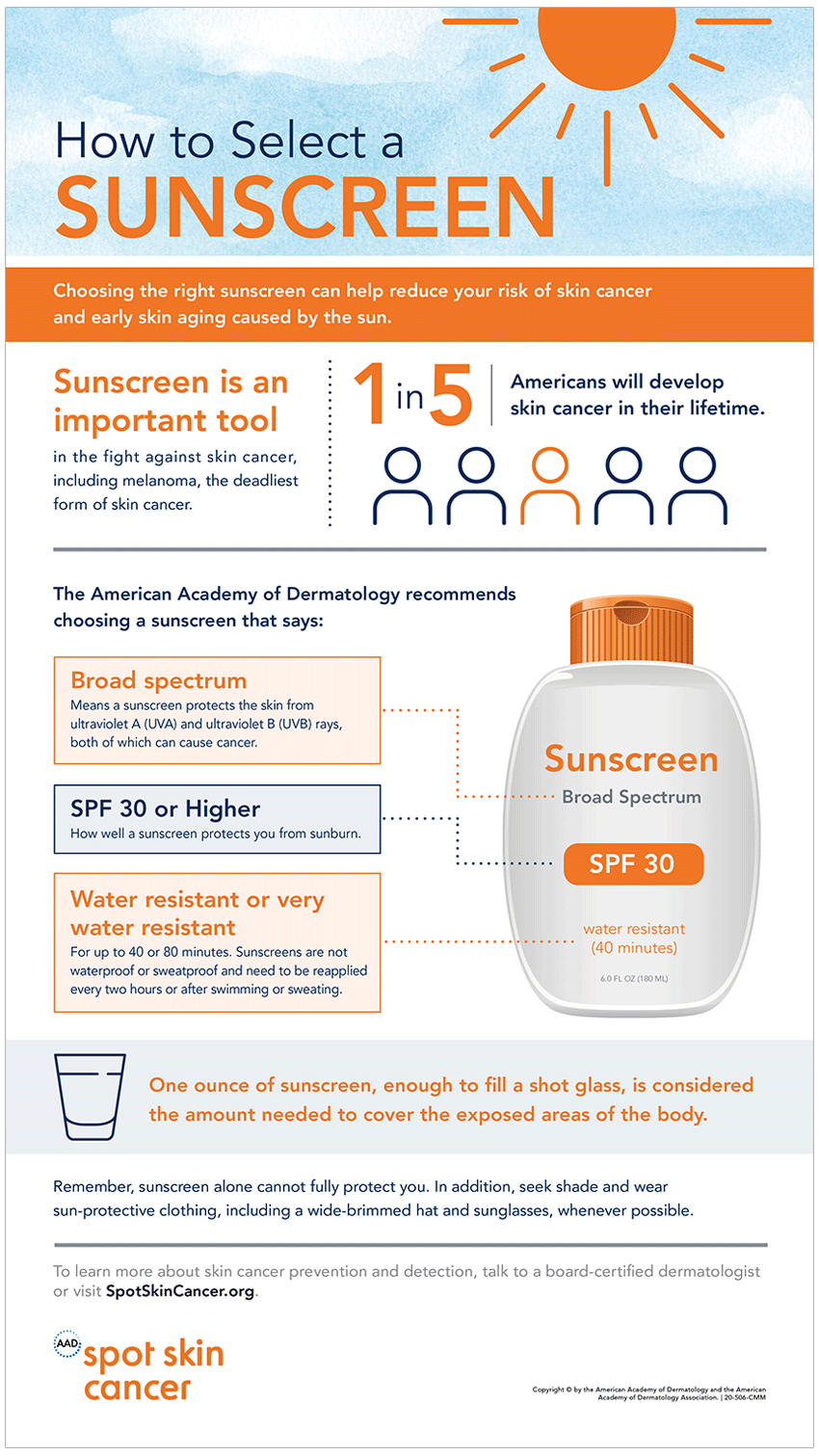
Sun Protection
Sun protection is a crucial step in any skincare routine. Exposure to the sun's harmful UV rays can cause damage to the skin, leading to premature aging, dark spots, and even skin cancer. In this section, we will explore the importance of sun protection, different types of sunscreens, how to choose the right sunscreen for your skin type, and proper sunscreen application techniques.
Importance of Sun Protection
UV rays from the sun can cause damage to the skin, leading to premature aging, dark spots, and even skin cancer. This damage can occur even on cloudy or overcast days, so it's important to wear sunscreen every day. Using a sunscreen with SPF (sun protection factor) of at least 30 can help to protect the skin from the harmful effects of the sun.
Different Types of Sunscreens
There are two types of sunscreens: chemical and physical. Chemical sunscreens work by absorbing UV rays and converting them into heat, while physical sunscreens (also called mineral sunscreens) work by reflecting UV rays away from the skin. Chemical sunscreens are usually more lightweight and easier to apply, while physical sunscreens are more suitable for sensitive skin and provide a physical barrier against the sun.
How to Choose the Right Sunscreen for Your Skin Type
When choosing a sunscreen, consider your skin type and concerns. If you have oily or acne-prone skin, look for a sunscreen that is oil-free and non-comedogenic. If you have dry skin, look for a sunscreen that is hydrating and contains moisturizing ingredients. If you have sensitive skin, look for a sunscreen that is fragrance-free and hypoallergenic.
Proper Sunscreen Application Techniques
To properly apply sunscreen, start by applying a generous amount to all exposed areas of the skin, including the face, neck, arms, and legs. Be sure to apply the sunscreen at least 15 minutes before sun exposure and reapply every two hours, or more frequently if swimming or sweating. Don't forget to apply sunscreen to often neglected areas such as the tops of the ears, back of the neck, and hands.
Conclusion: Sun protection is a crucial step in any skincare routine, helping to protect the skin from the harmful effects of the sun. By choosing the right sunscreen for your skin type and concerns and incorporating proper sunscreen application techniques into your routine, you can help to maintain a healthy and youthful complexion. Don't forget to wear protective clothing, seek shade, and avoid sun exposure during peak hours for the best possible results.
VIII. Final thoughts and recommendations
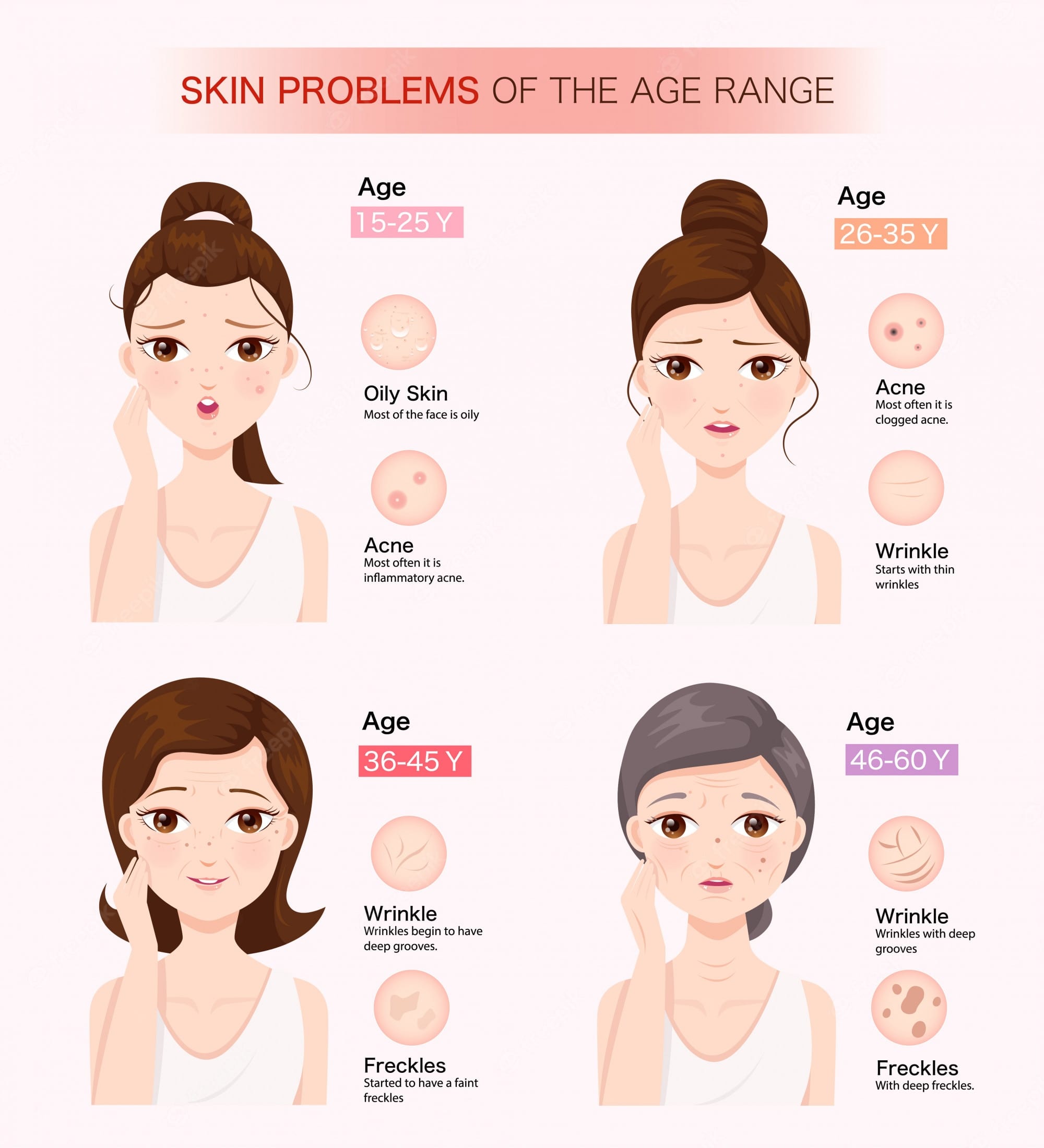
Common Skincare Problems And Solutions
In conclusion, building a skincare routine is essential for maintaining healthy and youthful-looking skin. Following the key steps of identifying your skin type, cleansing, exfoliating, treating, moisturizing, and protecting from the sun can help to address a variety of skin concerns and promote overall skin health.
Based on expert evidence, we recommend choosing products that are appropriate for your skin type and concerns, using gentle and non-irritating ingredients, and incorporating products that contain antioxidants and other beneficial ingredients such as hyaluronic acid, niacinamide, and vitamin C. It's also important to avoid harsh chemicals, over-exfoliation, and excessive sun exposure.
To maintain healthy skin, we also recommend staying hydrated, eating a balanced diet rich in fruits and vegetables, and getting enough sleep. Additionally, avoiding smoking and limiting alcohol intake can also benefit the skin.
In summary, building a skincare routine based on expert evidence can help to improve the appearance and health of your skin. By following the recommended steps and incorporating additional healthy habits, you can achieve a radiant and healthy-looking complexion.
References:
American Academy of Dermatology Association. (2020). Skincare on a Budget.
https://www.aad.org/public/everyday-care/skin-care-secrets/budget-skin-care
American Academy of Dermatology Association. (2021). Skin Care for Your 20s and 30s.
https://www.aad.org/public/everyday-care/skin-care-secrets/20s-30s
American Academy of Dermatology Association. (2021). Sun Protection. https://www.aad.org/public/everyday-care/sun-protection
Mayo Clinic. (2021). Skin care: 5 tips for healthy skin.
https://www.mayoclinic.org/healthy-lifestyle/adult-health/in-depth/skin-care/art-20048237






